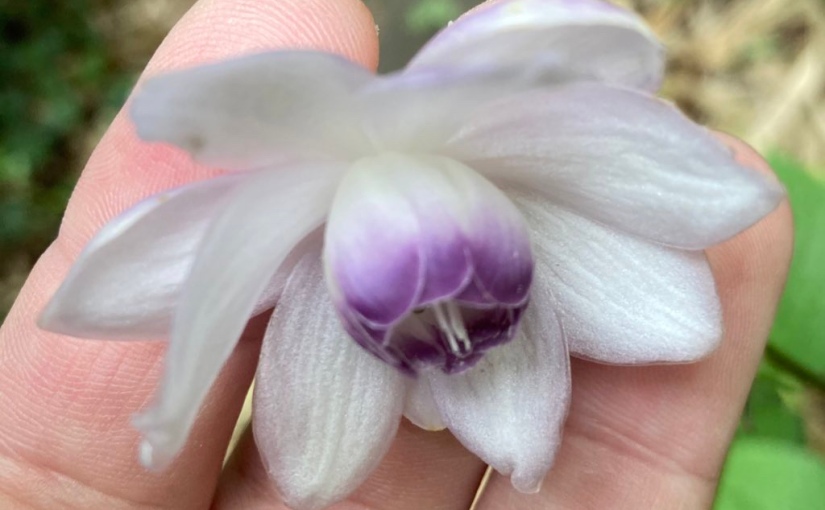
Anemonopsis macrophylla, the false anemone, is a herbaceous perennial in the Ranunculaceae family. It’s also one of the most exquisite flowers you can grow in the shade. In late summer, the nodding lilac and white flowers float above the clump of jagged-edged foliage like miniature upturned lotuses sculpted out of wax.

It is this resemblance which gives the plant its Japanese name, rengeshoma, lotus-flowered Actaea (shoma is Actaea, and renge is lotus). If you add ‘ki’, gold, you get another gorgeous Japanese endemic, Kirengeshoma palmata.
Anemonopsis macrophylla is found in the wild only in a few places on Honshu, the main island of Japan. It grows in the woodlands of the central mountains, and in the garden likes similar sheltered conditions. It needs shade and a good humus rich soil, and will not tolerate drying out. It’s also a good idea to protect it from slugs. ‘Slug Gone’ wool pellets work well for me and are non-toxic as well as good for the soil. Some authors suggest that it benefits from a slightly raised planting position. Overall, unless you are blessed with the exact conditions it prefers, sadly rare in the U.K., it is a plant that definitely requires a little extra effort to grow well.

There is also a white form of Anemonopsis macrophylla, sometimes sold under the name ‘White Swan’, and a double form, ‘Flore plena’. Though lovely, sought-after, and according expensive, neither of these beat the elegance of the straight species, in my opinion. In Japan, there is also a form with variegated leaves and one with a dark petiole (‘Aojiku’, a very desirable feature in Japanese horticulture). I have had, as yet, no success with these from imported seed.
